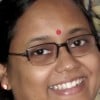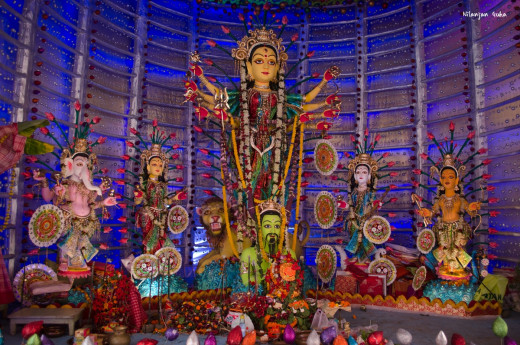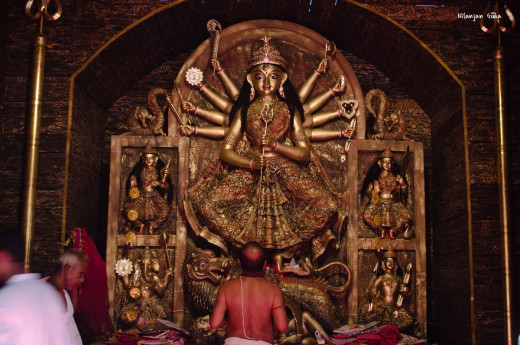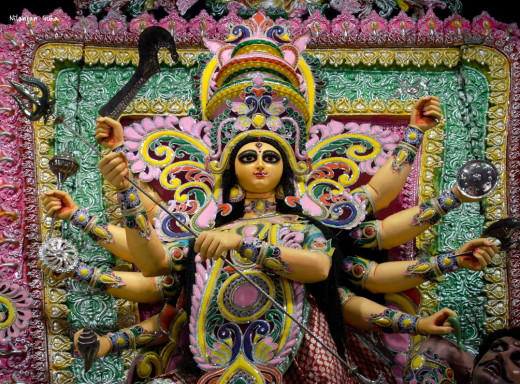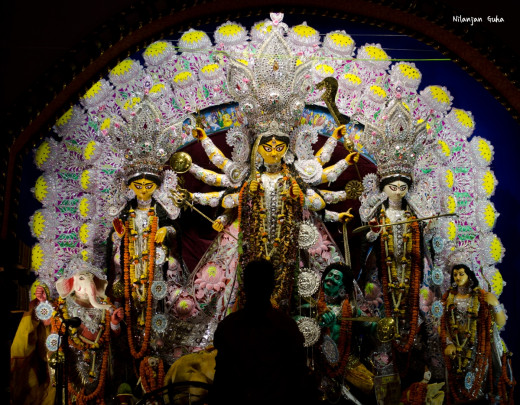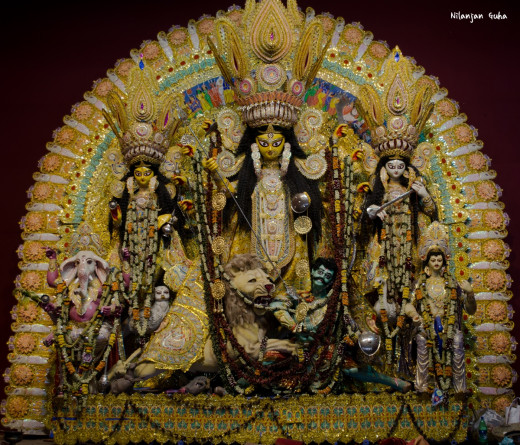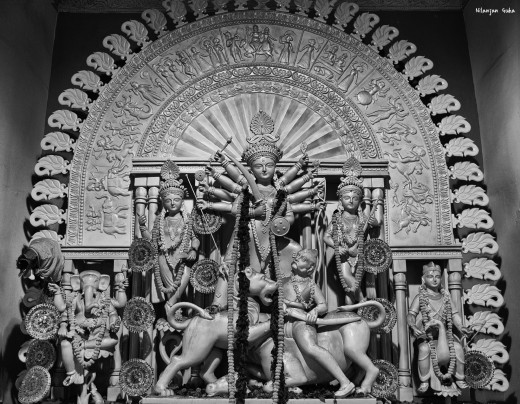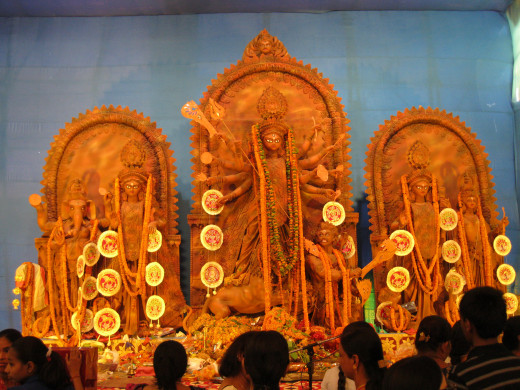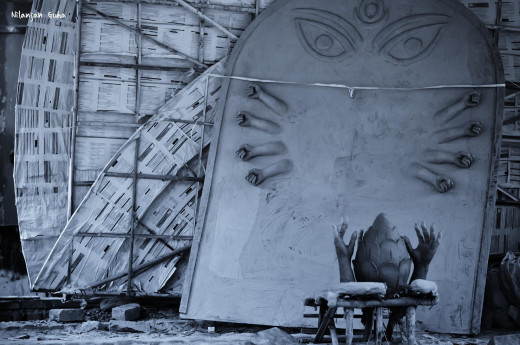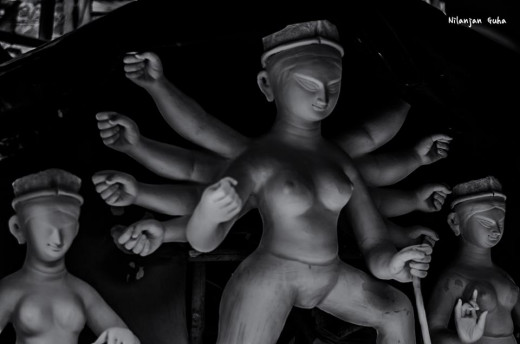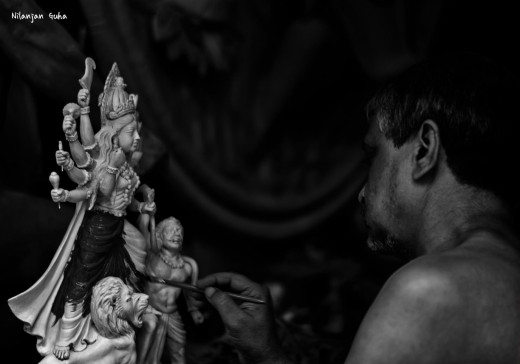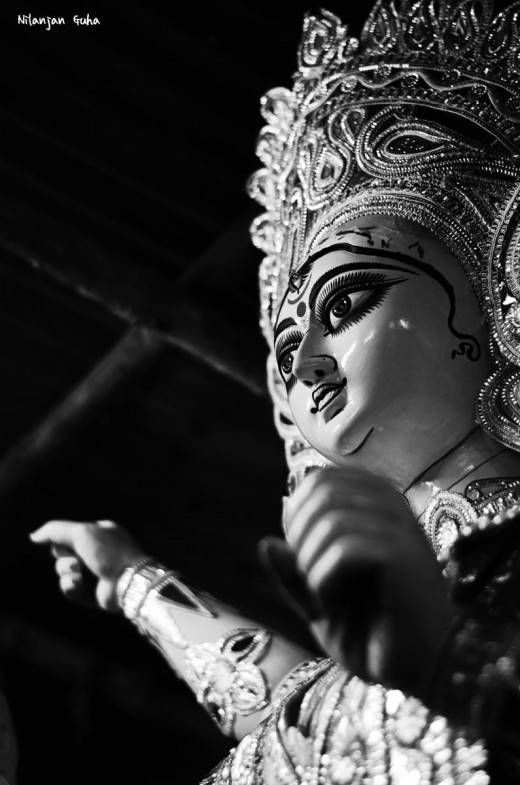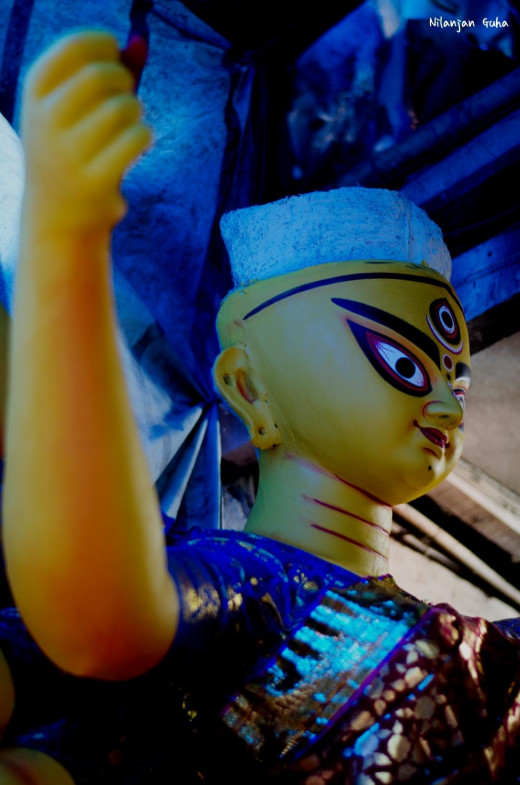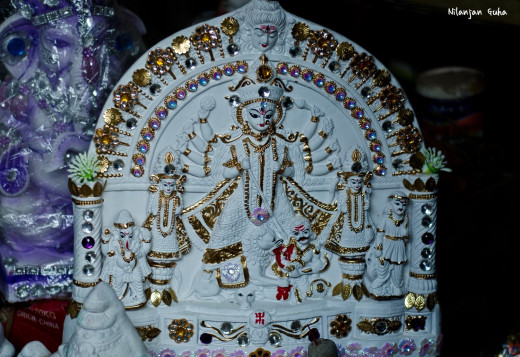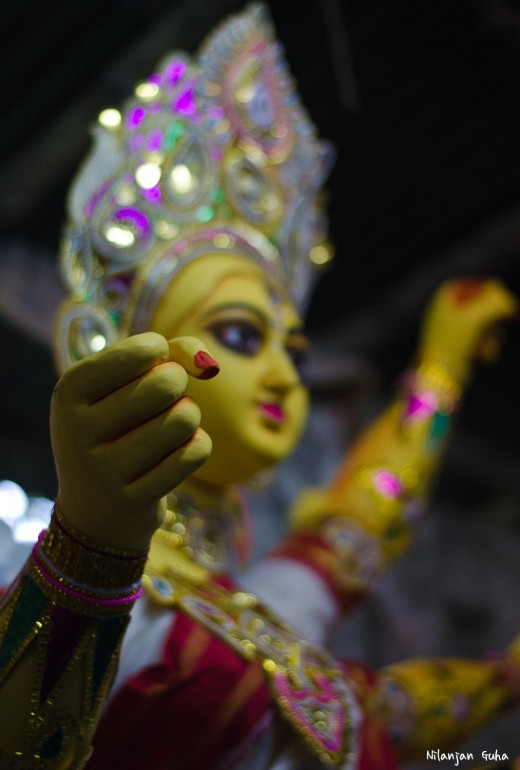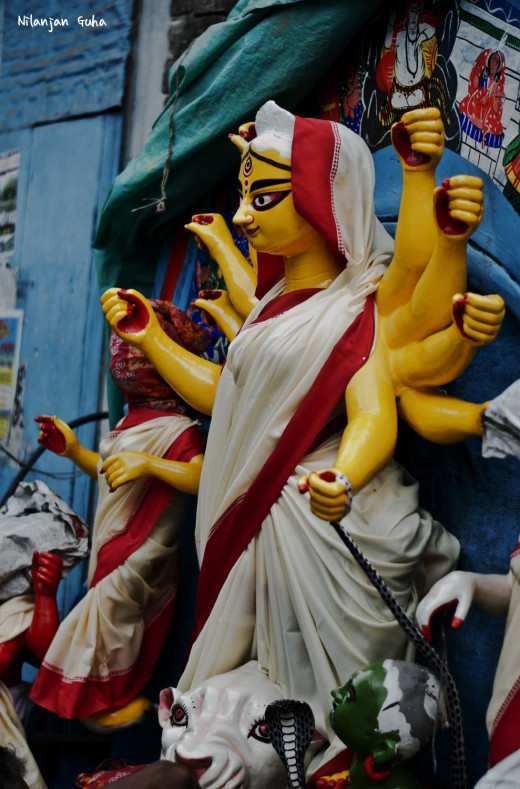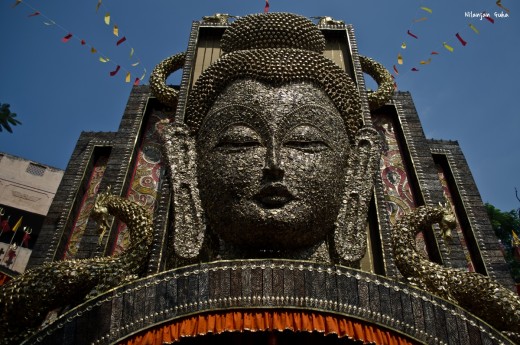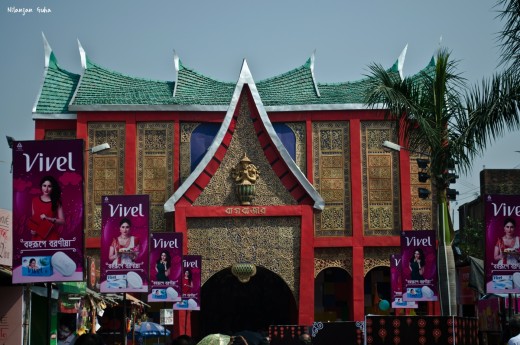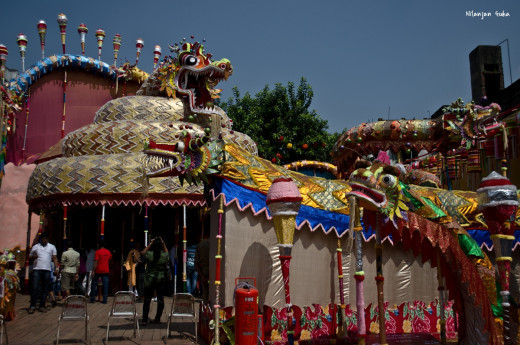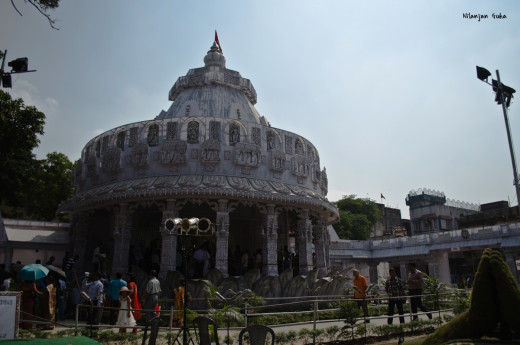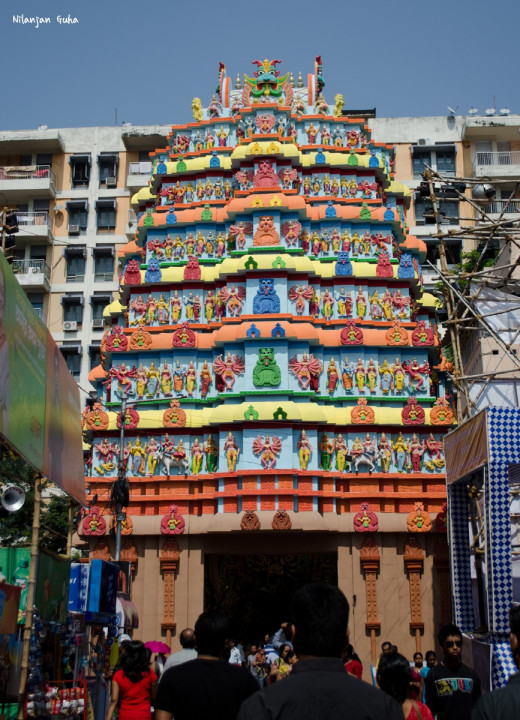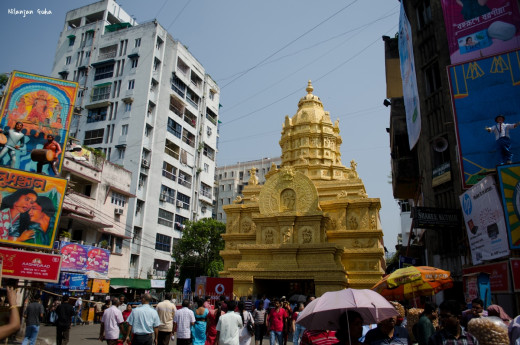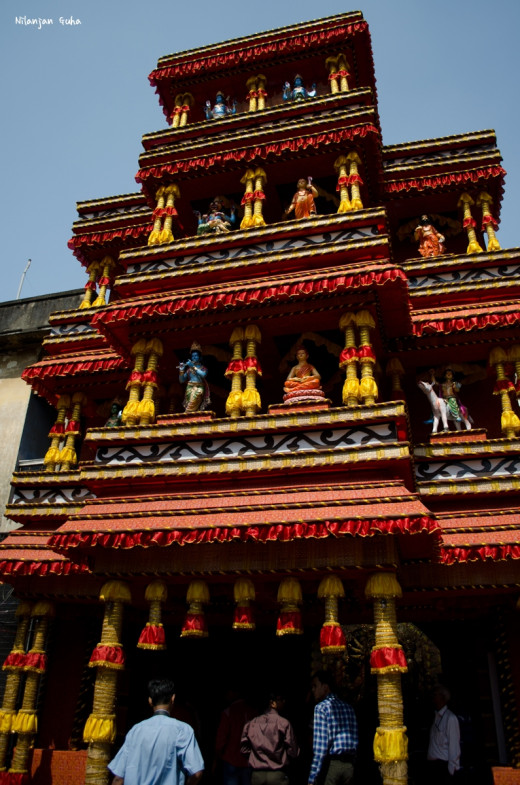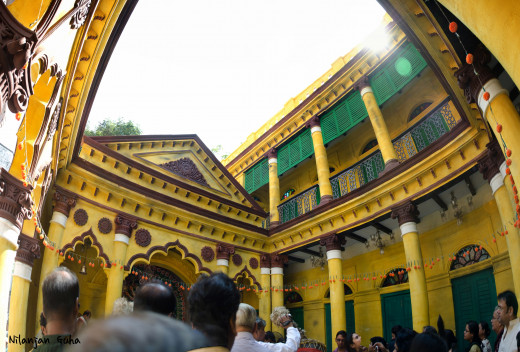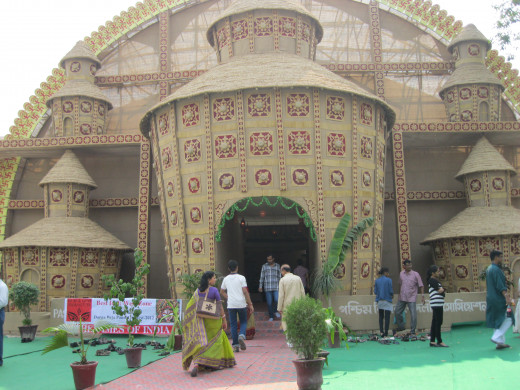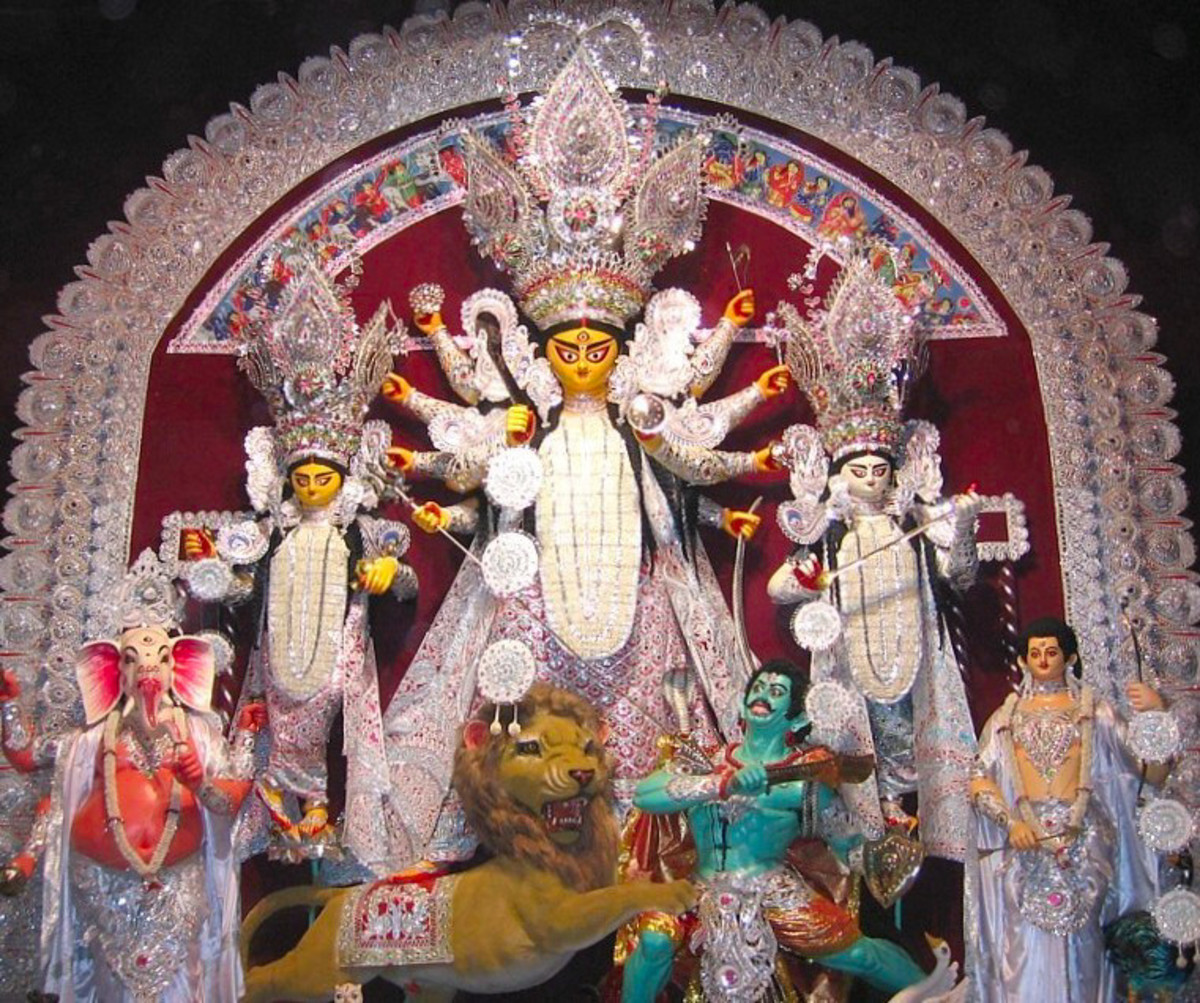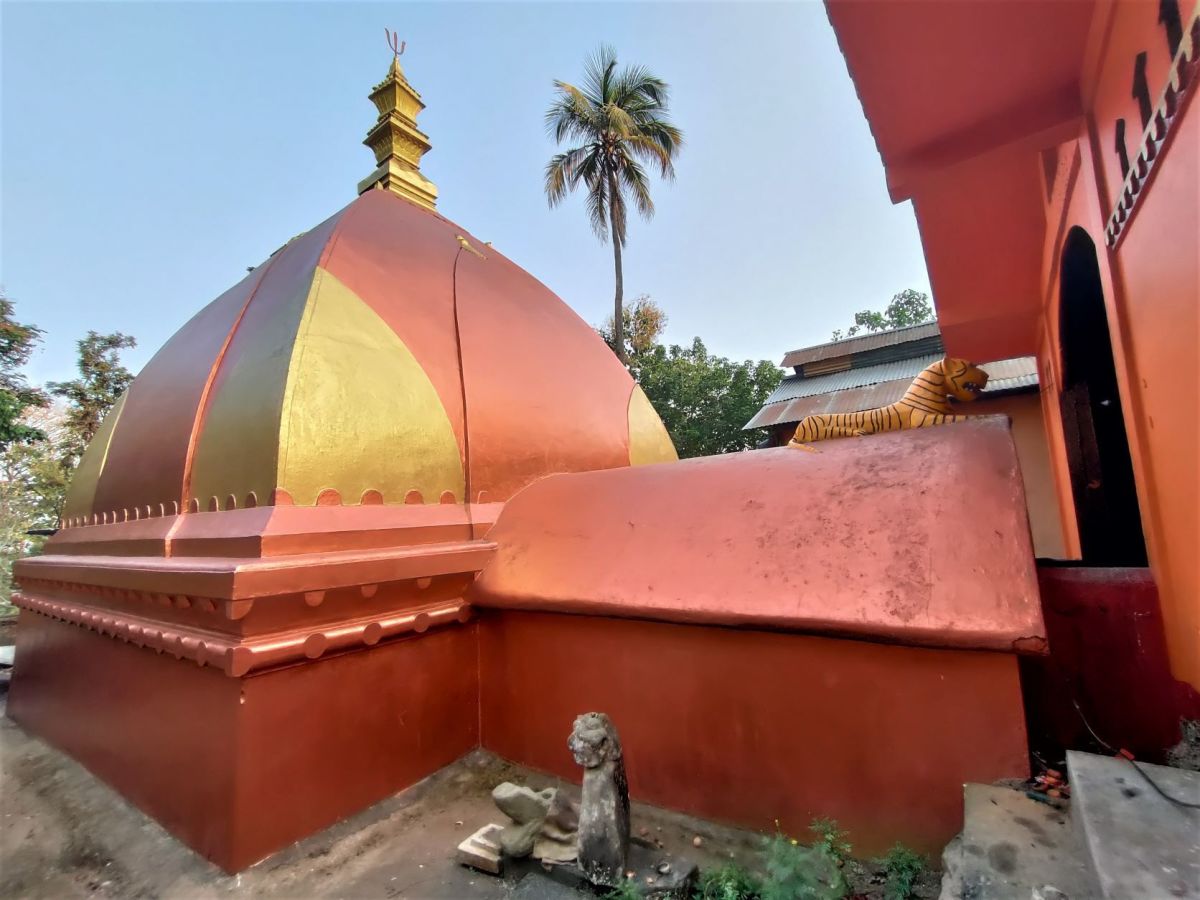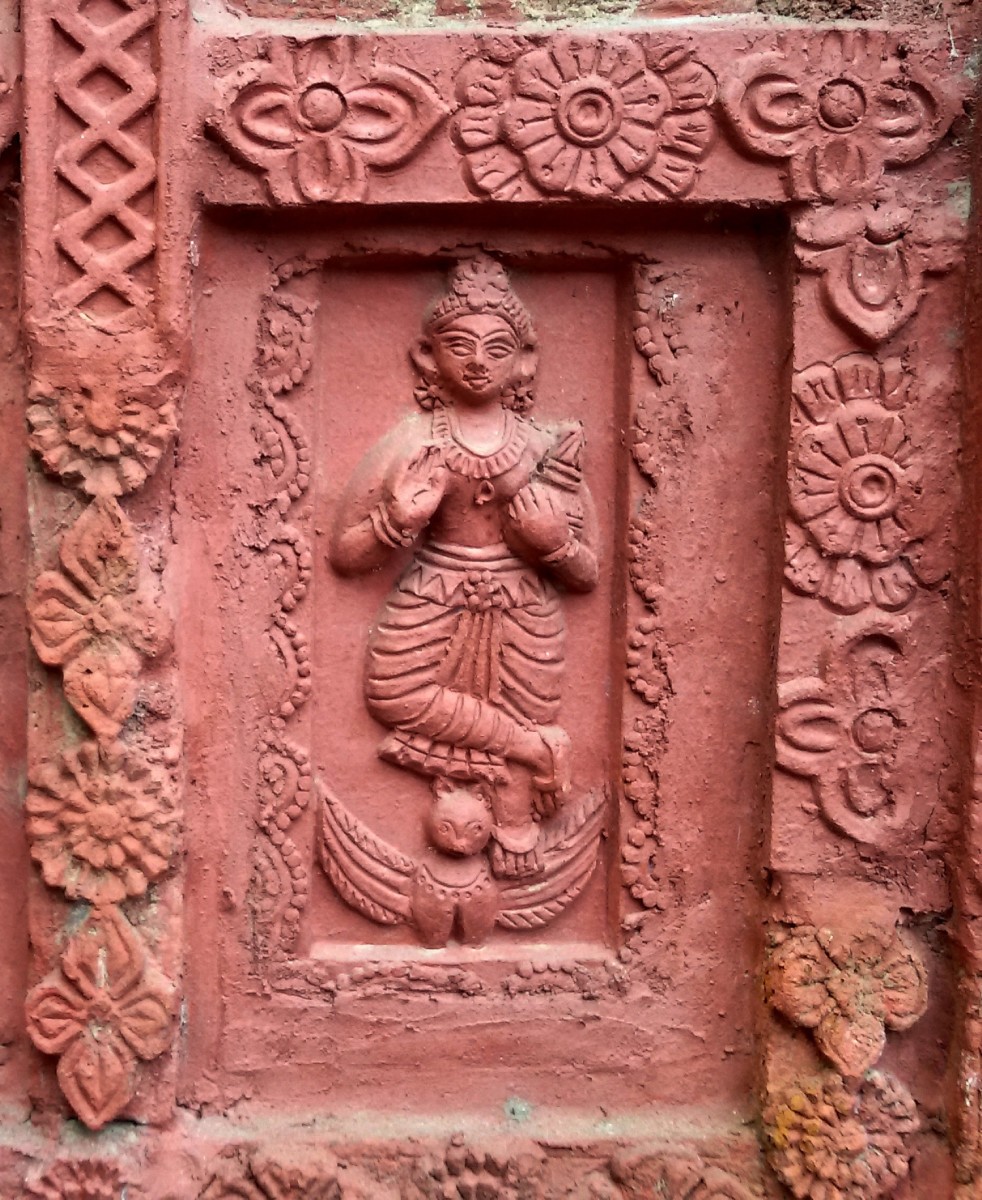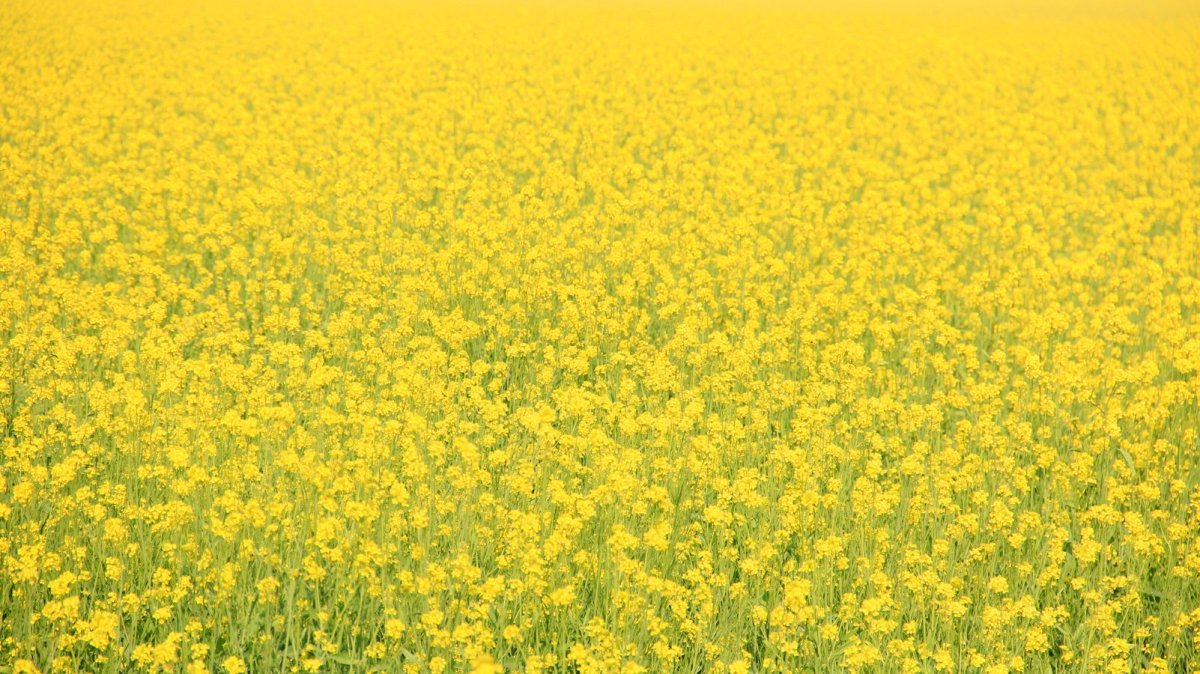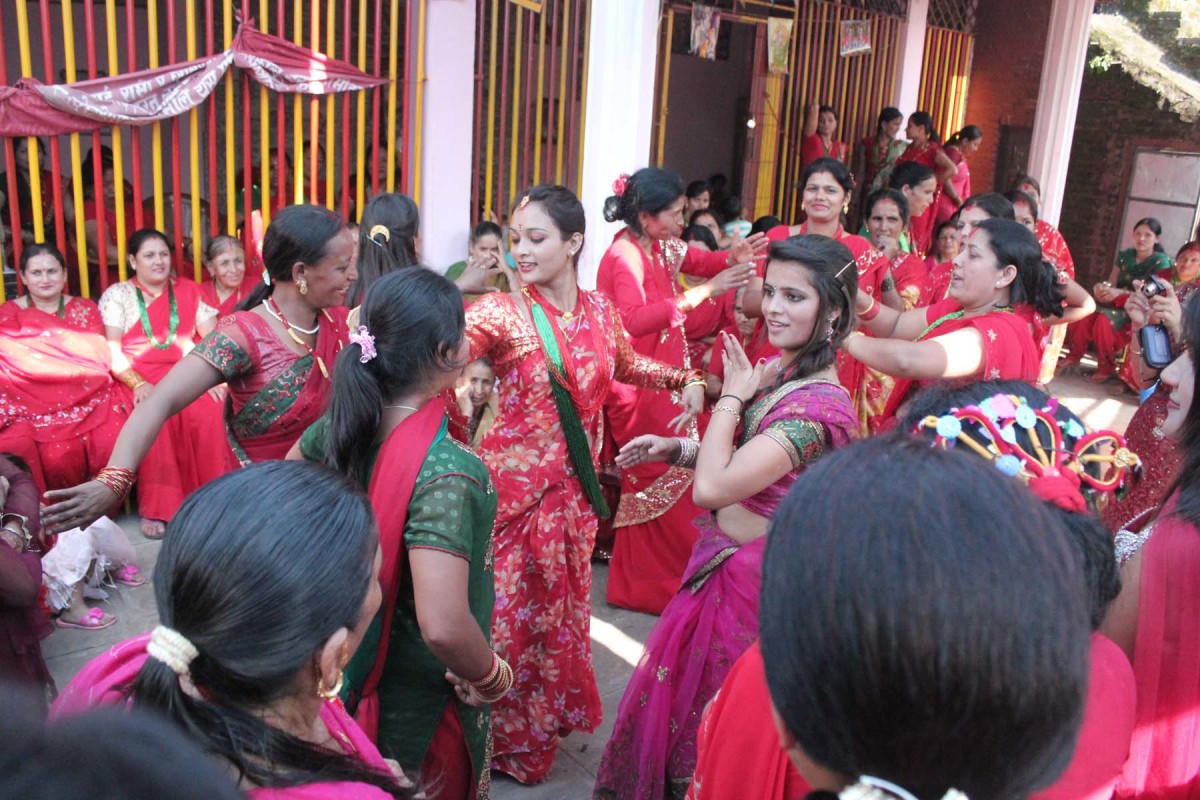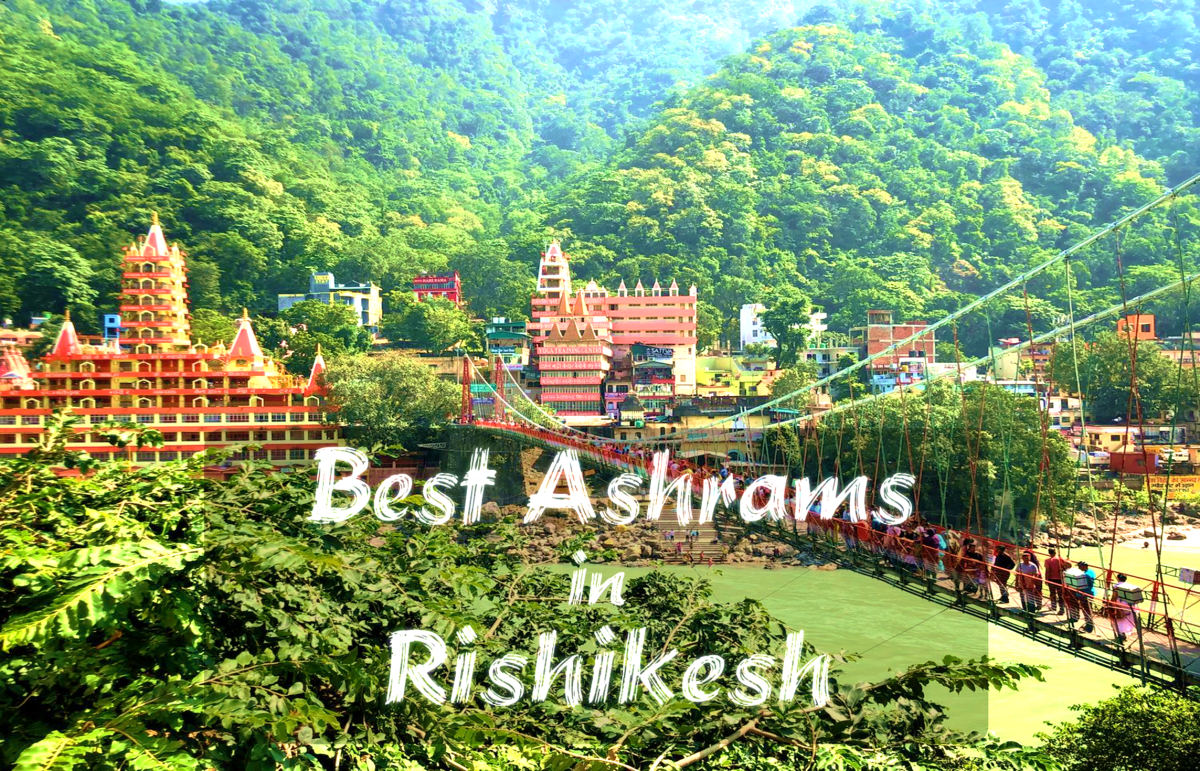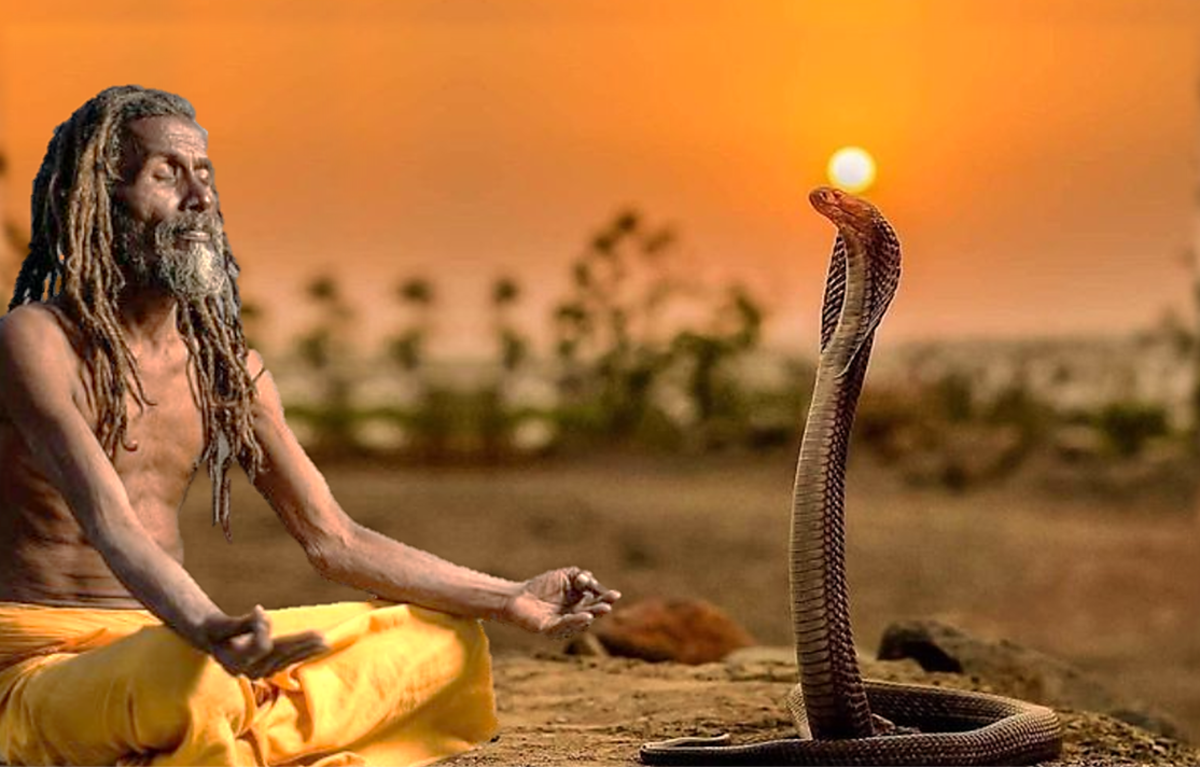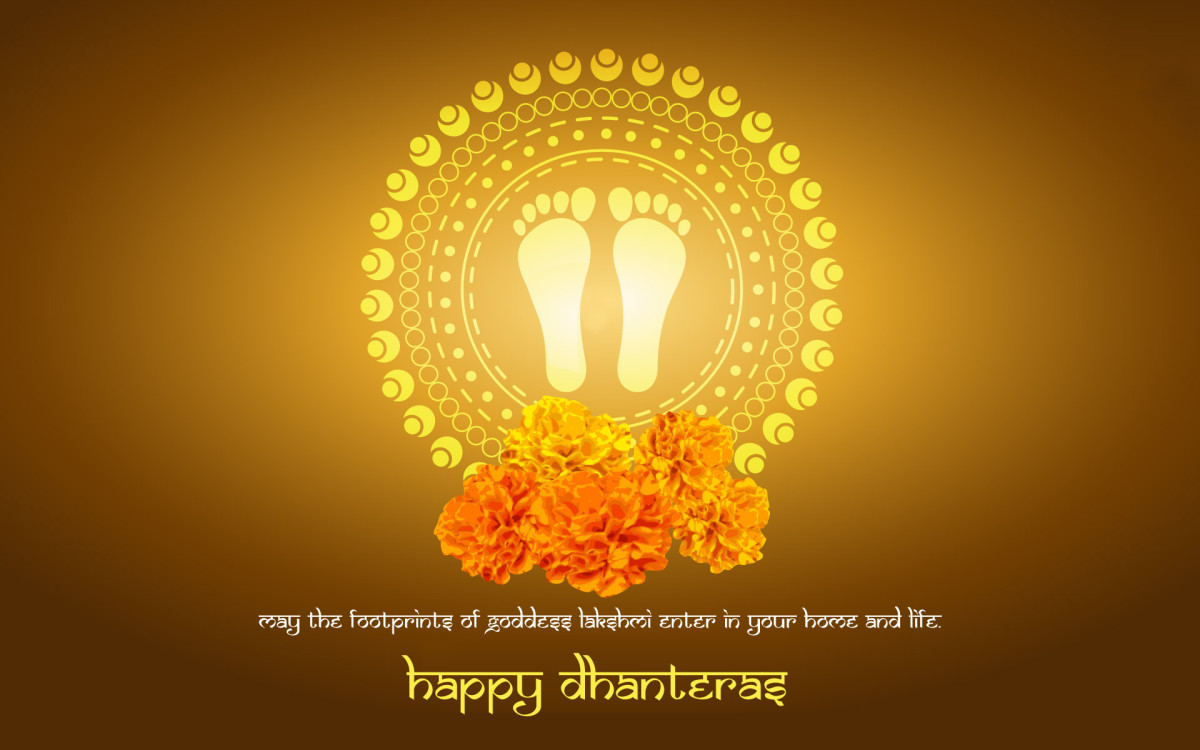Facts about Durga Puja, Photos of the Idols of the Goddess, Pandals and Visarjan
Maa Durga, The Mother of Supreme Power
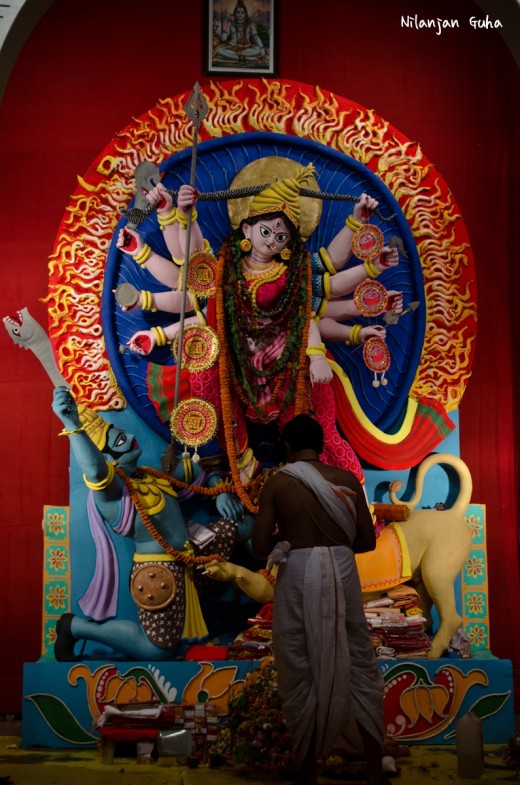








India and her Festivals
India is a land of many religions. People in India are followers of different religions but as a whole we all celebrate the various festivals together. I do not mean that every person of another religion participates in the various religious rituals but many participate in the festive celebrations. People relish the special dishes of the various occasions. In India the educational institutes and offices remain close on different religious festivals which simply indicate the oneness of the country.
Now, India is in festive mood. Some festivals got over recently such as Vishwakarma Puja, Ganesh Chaturthi, Durga Puja, Eid, Kojagori Lakshmi Puja, Karva Chauth and some are in the pipeline such as Diwali, Bhai Duj, Chhat, Moharam, Guru Purab and so on. This indicates a festive atmosphere.Nature and mood both are reflecting excitement and frolic. Everyone is busy in shopping. Either it’s personal, family, friends or household items. Along with shopping cleaning is also in the air.
Hindu Festivals
In India as it is said that there is a unity in diversity. Still, there is one section which is in majority. The majority people are the followers of Hindu religion but among Hindus too the festivals are celebrated in different ways because of the differences in regions of India. The method and rituals vary but the festive flavor remains intact. Sometimes it becomes a little confusing to adjust to the differences in celebration method but on the whole there is a common ground. Usually, the Hindus worship the same God or Goddess on a particular religious festival. That is what matters the most and makes India a unique entity with wide variations.
Right now, you must be wondering what my actual subject matter for this article is! Don’t worry I am not going to bore you by giving a piece of lecture on India as a symbol of unity in diversity but something interesting I’ve decided to pen down for you. This article will unfold some details about Durga Puja, a Hindu festival.
Durga Puja and Bengalis
I am a Bengali (mother tongue is Bengali) who celebrated/celebrate Durga Puja with lots of fun and frolic like any other Bengali because it’s the main festival of the Bengali speaking Hindus. Up till teens I like other teenage children was much interested in having new dresses. Only intention was to wear a new dress and get ready beautifully for every outing during the Durga Puja celebrations. Repeating a dress was never in my agenda but suppose I unfortunately had to repeat a certain dress then it seemed something had terribly gone wrong.
With age many things have changed. Now, I even avoid going out during the festival but still having new attire from some loved one during Durga Puja gives me pleasure. This festival is a special occasion for the Bengalis and undoubtedly it is celebrated with great pomp in the region where Bengali Hindus are in majority. Thus, it is in West Bengal where Goddess Durga is worshipped with a great devotion. Along with West Bengal this festival is one of the major festivals of the Eastern Region of India too such as: Bihar, Jharkhand, Assam, Orissa and Tripura.
Facts about Maa Durga
Goddess Durga is the symbol of Women strength. She is known to be the incarnation of Parvati with all the weapons and power given by various Gods who were unable to kill the demon Mahishasur ( bull demon). Maa Durga was created to kill Mahishasur and after she did so then she was also named as Mahishasurmardini means the slayer of the bull demon. According to the Hindu mythology Goddess Durga was worshipped with all the gaiety and rituals in the spring season. It is known as Basanti Puja. The Puja consists of ten days and it is mentioned in the Hindu mythology that Lord Rama was born on the ninth day of the spring Durga Puja. Thereafter ninth day of Basanti Puja is named as Ramnavami.
Lord Rama aiming towards His own eyes
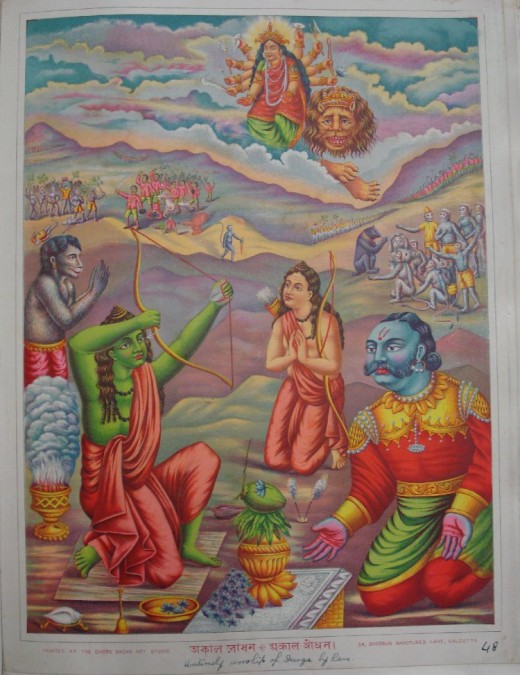
Connection between the Goddess Durga and Lord Rama
Lord Rama was the seventh incarnation of Lord Vishnu. His wife Sita was kidnapped by the demon king Ravana. To free Sita from the clutches of Ravana, Lord Rama decided to slay the demon king. Lord Rama decided to seek the blessings from Goddess Durga to achieve success in killing Ravana. To this He invoked Goddess Durga , the symbol of supreme power, but untimely. As traditionally Goddess Durga was worshipped in the spring season but due to the battle Lord Rama invoked the Goddess for her majestic blessings in the autumn season. It is said that God and Goddesses enjoy long sleep during the autumn season. It’s because during autumn the days are shorter and nights are longer, and nights belong to demons.
To perform the prayer and make Durga Maa happy by His devotion, Lord Rama needed 108 blue lotus flowers. He could arrange only 107 of them and for the 108th one he wanted to take out His own eyes and offer it to Maa Durga to complete the prayer service. The reason was Lord Rama’s eyes were lotus shaped and blue in colour. His devotion made the Goddess happy and she emerged in front of Lord Rama to stop Him from taking out His own eyes. In the meantime Maa Durga blessed Lord Rama with all the strength to conquer the demon king Ravana. This untimely invocation of Maa Durga is known as ‘Akal Bodhan’ in Bengali. From then on Goddess Durga is worshipped in autumn too. The autumn Durga festival is known as Durga Puja and is celebrated in a very large scale. While the spring Durga Puja, traditionally the original Durga Puja which is known as Basanti Puja, lost out to the autumn one in terms of celebration extravaganza.
Navratra
In North India as well as in the western part of India Maa Durga is worshipped during spring and also in autumn. In this region these festivals are known as Navratra. The devotees keep fast and worship Goddess Durga. See, the same Goddess is worshipped in the different parts of India while the rituals, name and process all differ. Wherever there is a Bengali community, the people try to organize Durga Puja, the autumn one. Puja brings joy to every heart.








Durga Puja Pandals
Click thumbnail to view full-size








Offering Sweets to Durga Maa during Bijoya Dashami
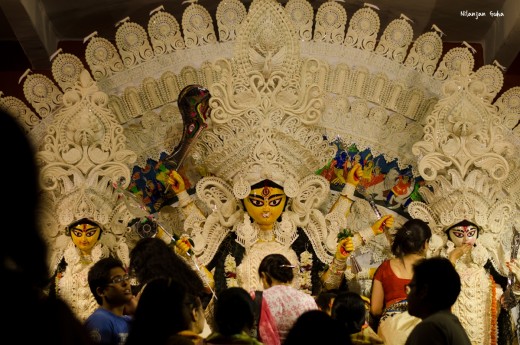
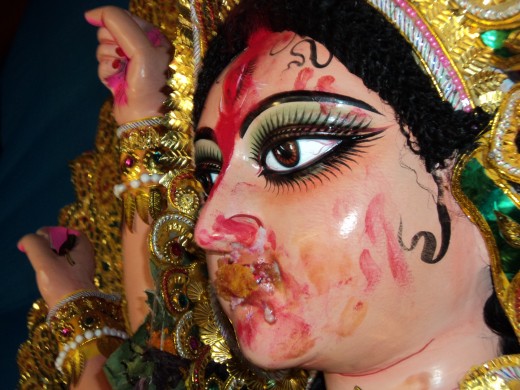
Preparation of Durga Festival
Though the time span of this festival is ten days but preparation of the festival takes a huge time. The temporary temples are erected and they are called pandals and in Bengali are called mandaps; idols of the Goddess and her children (daughters Lakshmi and Saraswati, and sons Kartikeya and Ganesha) are made, collecting voluntary grants, accepting donations and arranging sponsorship to meet the expenditure. This festival is commonly organised for the people by different committees. There are some family based pujas too but the number is quite less than the committee pujas. While arranging the idol of Goddess Durga it is very important to place her children at a proper position. Ganesha and Lakshmi are placed at the right hand side of Maa Durga while Kartikeya and Saraswati are positioned at her left hand side.
Various materials are used to make a pandal and even for the idols. Earlier idols were used to be of clay but now innovation has shown its effect in the field of idol making too. I am sure the photographs of various kinds of pandals, idols and visarjan (immersion of an idol) will draw your attention. See the creativity which definitely deserves kudos. Making of idols is a huge responsibility of the artists because it is quite time consuming as well as a minute and detail artistic skill is required.
Beginning of Durga Puja Celebration
According to the Hindu calendar, it has to be a new moon night in autumn just ten days prior to Durga Puja. On that day it is believed that the Goddess is given wholehearted invitation by the devotees to come down on earth as it is believed that the Gods and Goddesses awake for a short time as in general they enjoy a long deep sleep during this period. In Bengali it is known as Mahalaya which takes place when 'Pitru Paksha' ends and 'Devipaksha' starts. It's actually before the sunrise. During the Devipaksha (a terminology used according to the Hindu time and calendar) the eyes of the idols are drawn. Very next day is the first day of the ten days festival and it is assumed that Durga Maa starts her journey to earth from heaven. On sixth day that is sasthi to the ninth day that’s navami including saptami and asthami (seventh and eighth day respectively) in between are the most important days of this festival. The final day is the tenth day when its time for the Goddess to go back to her home in heaven. It is known as Bijoya dashami in Bengali and on this day the married ladies smear Durga Maa and other married women with vermilion on the note of bidding adieu. It symbolizes happy parting and a wish of happiness always. The Goddess is offered sweets by the married ladies and also a farewell aarati (offering lighted diyas) which is known as 'baron' in Bengali. Later the idol of Maa Durga is immersed in water and is also called Visarjan.
In northern India Bijoya Dashami is popularly known as Dussehra. A Hindu Mythological story behind Dussehra is that Lord Rama killed the demon king Ravana on the tenth day while rescuing Sita, his wife, from her abductor, Ravana, and emerged victorious. On every Durga Puja enactment of Ram Leela (stories related to Lord Rama) is very common and on Dussehra the effigies of Ravana, Kumvakarna and Meghnad are still burnt publicly in a very wide scale. It is known as ‘The truth wins over the evil’
Durga Visarjan (Immersion)
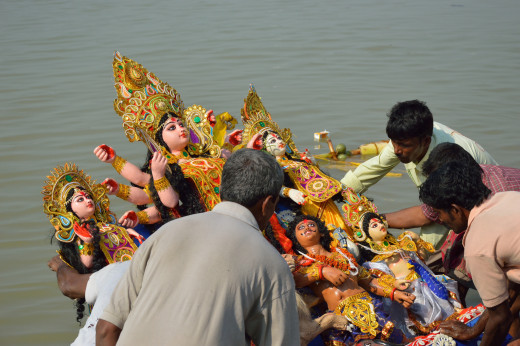
Dhaki playing Dhak and Dhunuchi Dance
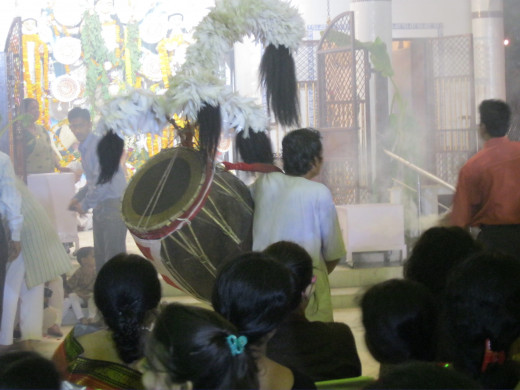
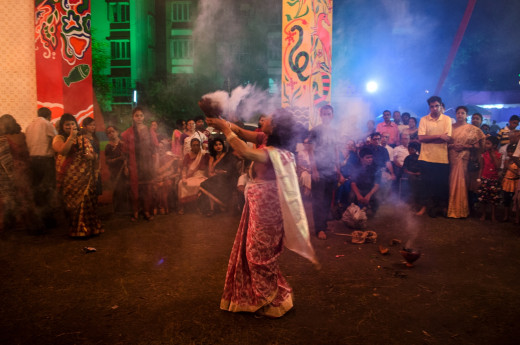
Durga Puja conveys a moral lesson
During the celebration of Durga Puja festival one thing is very common at every pandal and that is 'dhunuchi nritya' and 'dhak bajano'. Dhunuchi is a kind of earthen lamp in which coconut coir are burnt with incense powder. It does not light up as oil lamps but smoke comes out as long as it burns and beautiful aroma spreads around. People dance with it in front of the idol as an offering along with the rhythmic drumming of dhak. This instrument is a form of drum and is decorated with feathers. The dhak players are called 'dhaki' and usually while they play it they hung their dhak by their neck or shoulder. It's sound is extremely enjoyable and makes the festive season much more exciting.
Every religious festival is a symbol of truth, love and purity. Durga Puja is no different. It signifies the victory of the truth and that is why Durga Maa is also known as 'Durgatinashini'. It means the slayer of the evils. Among all the fun during this occasion devotees worship to the Goddess with true devotion. On the tenth day when the festival comes to an end then also it spreads the message that 'good triumphs over evil' and people must respect this message to make life worth living. Durga Puja is full of excitement but contains a strong moral lesson.
